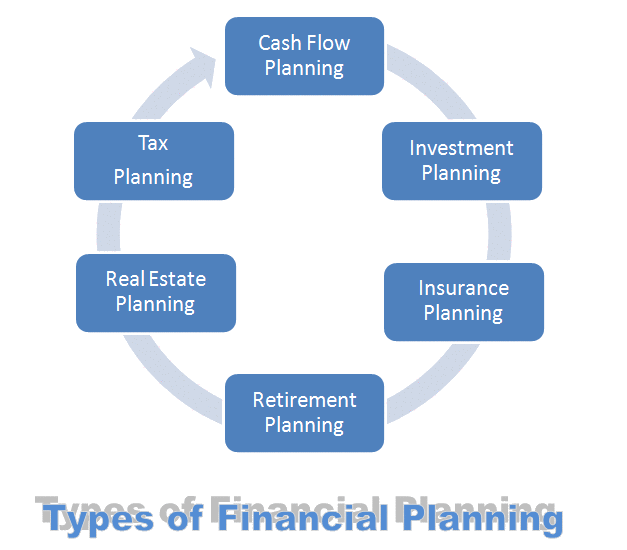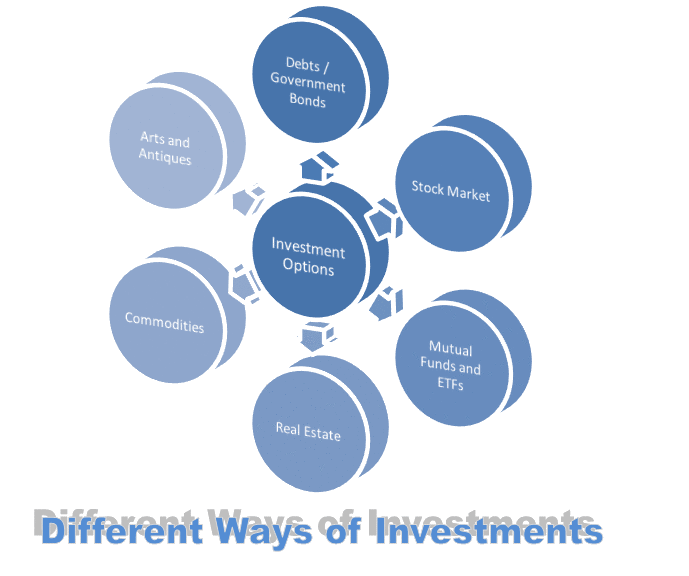A business or organization may submit a funding request at any time. To launch or expand a business, cash is necessary. There is a substantial difference between these stocks vs bonds vs debentures terms. Despite the fact that they are frequently use interchangeably. This essay will analyses the differences between bonds vs debentures, and differences between stocks vs bonds.
The majority of businesses choose debt instruments such as bonds and debentures to raise capital. This is how debentures are view in the United States, further complicating matters. A “debenture” is a bond that is secured by the company’s assets. In some locations, the terms are interchangeable.
Overview of Stocks
Stocks represent a share of a company’s ownership, or equity. When you purchase shares of a company’s stock, you are essentially owning a little chunk of that business. And the more shares you own, the greater your stake in the business. Assume a company’s stock is trading at $50 per share, and you decide to buy 50 shares for $2,500.
Consider for a moment that the business is profitable for a number of years. Because you own a percentage of the company, you will share in its success, and your shares will appreciate as the business expands. If the stock price grew by 50 percent to $75, your investment would be worth $3,750 more. The shares might then be sold for a $1,250 profit to another investor.
As implied by common sense, the opposite is likewise true. The value of your shares may fall below the purchase price if the underlying company performs poorly. If you were to sell them, you would suffer a loss.
Commonly, shares of a corporation are refer to as “stocks”. Stocks are also refer as equity shares and corporate stock. The most prevalent reason why businesses sell shares to the public is to obtain funds for future expansion.
Overview of Bonds
The most prevalent financial instrument utilize by both private and public entities is bonds. This is a legal agreement between the issuer and the investor. An investor lends funds with the assurance that they will be repaid on or before the maturity date. The investor will typically receive monthly interest payments for the term of the bond.
In the financial world, bonds are view as a low-risk investment alternative. Creditworthy firms or governments are less likely to renege on their obligations. Whether issued by a government agency or a municipality, each bond will carry its own credit rating.
Bonds are typically view as safe investments that guarantee a return, although a modest one. Professional financial advisors typically advise their clients to maintain a portion of their money in bonds and to grow their bond holdings as they near retirement age.
Overview of Debentures
Unlike other bonds, debt obligations serve a more limited purpose. Typically, bonds are use to finance a planned project or corporate expansion. Debentures are the most used method for raising capital. These debt securities are a common source of long-term financing for companies.
Debentures provide a return to investors in the form of a variable or set coupon rate and a maturity date. When it comes to paying interest, the corporation usually always pays interest first, followed by any dividends to shareholders.
When the payment is due, the business has two options. They have the option to pay in full or in installments. The corporation will pay the investor annually until the debentures mature. A payment plan is a redemption reserve for debentures. The per-debenture documents will specify the terms of the debenture.
Debentures are also refer as revenue bonds since the issuer hopes that the loans will be pay back from the business’s profits. Not backed by real estate or other assets, debt obligations are unsecured. They are back by the issuer’s unshakeable confidence and market standing.
As with other bonds, certain debentures are convertible, meaning that their value can be convert to business stock. Investors like convertible securities and are willing to accept lower returns in exchange for them.
Similar to other types of bonds, debentures can be obtain through a broker. This characteristic dilutes the per-share metrics of the company, hence decreasing future earnings per share. a debenture convertible (EPS).
Bonds vs Debentures
All bonds are debentures in certain ways, but not always. A debenture is a bond that is not guarantee by the issuer. The differences between bonds vs debentures are describe in greater detail below.
The Demand for Security
The purchase of bonds requires a type of collateral. In contrast, there are two types of debt obligations: secured and unsecured. People are willing to purchase debentures from such organizations because they have faith in them, hence large public firms with a high image can routinely issue debentures without security.
In the Event of Bankruptcy
If a corporation is force to liquidate due to financial difficulties, bondholders receive first priority for repayment. In contrast, debt investors receive a proportionally reduced payout if the company declares bankruptcy. This is one of the important difference between bonds vs debentures.
Tenure
Typically, bonds are issue by financial institutions, government agencies, major enterprises, and other organizations of a similar nature. For example: due to their lower risk, private companies issue the majority of debt instruments.
Remuneration
The interest on bonds is compute using the accrual method. Payments to lenders are typically made monthly, semiannually, or annually. They are not affect by the economic performance of the issuer. The frequency of interest payments on debentures is typically determine by the operations of the issuing corporation.
Level of Danger
Because bonds are back by collateral, creditors view them as secure investments. Another factor is that bond-issuing businesses are constantly evaluate by credit rating agencies. Typically, debt obligations are not secured, therefore investors should be aware that they are riskier. Instead, they are fully support by the issuer’s good faith and credit.
Issuer
Typically, bonds are issue by financial institutions, government agencies, major enterprises, and other organizations of a similar nature. Other similar organizations may also issue bonds. Private companies typically issue debentures due to the low risk involved.
Rate of Interest
Since future interest repayment is predictable, bond investors frequently profit from reduced interest rates. Additionally, each bond is secured. The issuer’s reputation is the only security supporting debt instruments with a higher interest rate. They are a fantastic investment overall.
Conversion to Stock
Unlike bonds, certain debentures can be convert to equity shares. A convertible debenture holder can convert their debentures into business shares if they anticipate the stock price will grow in the future. In contrast, convertible debentures offer lower interest rates than typical fixed-rate investments.
Stocks vs Bonds
Some stocks offer the same fixed income benefits as bonds, while others are riskier and have greater return potential. Both stocks and bonds attempt to raise their holders’ wealth, but they do it in vastly different ways and at vastly different rates. Let’s compare stocks vs bonds now.
Portfolio Allocation of Stocks vs Bonds
Numerous proverbs might help you determine the proportion of your portfolio that should be invest in stocks and bonds. According to one school of thought, the proportion of stocks in a portfolio should equal 100 minus the investor’s age. Therefore, if you are 30 years old, your portfolio should consist of 70 percent stocks and 30 percent bonds.
At age 60, your portfolio should be comprise of 40% stocks and 60% bonds. As you approach retirement, you can protect your savings from market volatility by investing more in bonds and fewer in stocks.
Given the increased life expectancy and widespread availability to low-cost index funds, sceptics of this hypothesis would claim that it is overly conservative. These funds provide low-cost diversification and have a lower risk profile than individual stocks. Others believe that in today’s society, it is more fair to subtract 110 or even 120 years from one’s age.
The majority of investors base their stock and bond portfolio decisions on their risk tolerance. How much volatility are you willing to endure in exchange for long-term profits? Remember that an all-stock portfolio is nearly twice as likely to lose money as an all-bond portfolio. Given your time horizon, are you willing to endure downturns in exchange for a likely higher long-term return?
Fixed Profits or Capital Profits
Both stocks and bonds can generate cash, but in very different ways. To generate a profit on the stock market, you must sell the company’s shares for more than you purchased for them. This is the only way that stocks may be lucrative. Capital gains may be distribute as income or reinvest, and they are tax differently depending on whether they are long-term or short-term.
Bonds generate income through monthly interest payments. Typically, Treasury bonds and notes are distribute, but this could vary. Treasury bills maturing in six months: Corporate bonds are redeemable only upon reaching maturity. You may choose to pay it semiannually, quarterly, monthly, or all at once.
Although bonds can be sold for a profit on the market, the fix-income appeals to many conservative investors due to their stability. Likewise, numerous stocks generate a fixed income that is more comparable to debt than equity. However, as previously said, this is not always the case.
Equity or Debt
Commonly, the equity and debt markets are refer as the stock and bond markets. Equity is the most extensively held and liquid asset. Frequently, businesses sell shares to raise funding for expansion. In return, investors can profit from the company’s continued growth and success.
Bonds are essentially a form of debt that must be repaid with interest. You will not own any shares of the company, but you will sign a contract requiring the company or government to pay a specified interest rate plus the principle balance at the end of the term.
Ineffectiveness in Reverse
In terms of price, stocks and bonds usually move in opposite ways; as stocks rise, bonds fall, and vice versa. This is an additional important distinction between stocks and bonds.
When the price of stocks rises and more people purchase to profit from the increase, bond prices may fall due to a lack of demand. When stock prices fall and investors seek safer investments with lower returns, demand for bonds increases.
Interest rate performance is also related to bond performance. Due to the fact that newly issued bonds will have a lower yield than your bond, the value of a 2-percent-yielding bond may increase when interest rates fall. If interest rates rise, however, newly issued bonds may perform better than yours. This would reduce demand for your bond, hence decreasing its value.
During economic downturns, when most stocks underperform, the Federal Reserve decreases interest rates to encourage individuals to increase their spending. Existing bonds increase in value when interest rates fall, worsening the opposite price dynamic.
Conclusion
When it comes to raising cash for the short- and long-term needs of a business, all strategies are equally vital. Instead of stocks, lenders frequently invest in bonds and debentures, which are low-risk financial assets. Similar to stocks vs bonds, bonds vs debentures have unique characteristics that separate them.







